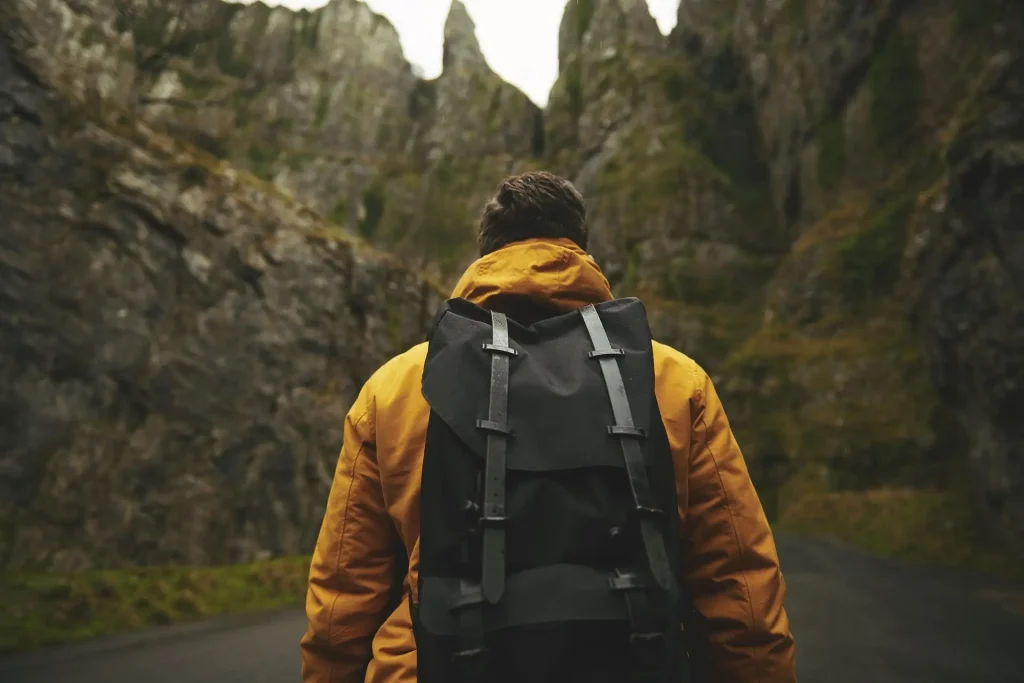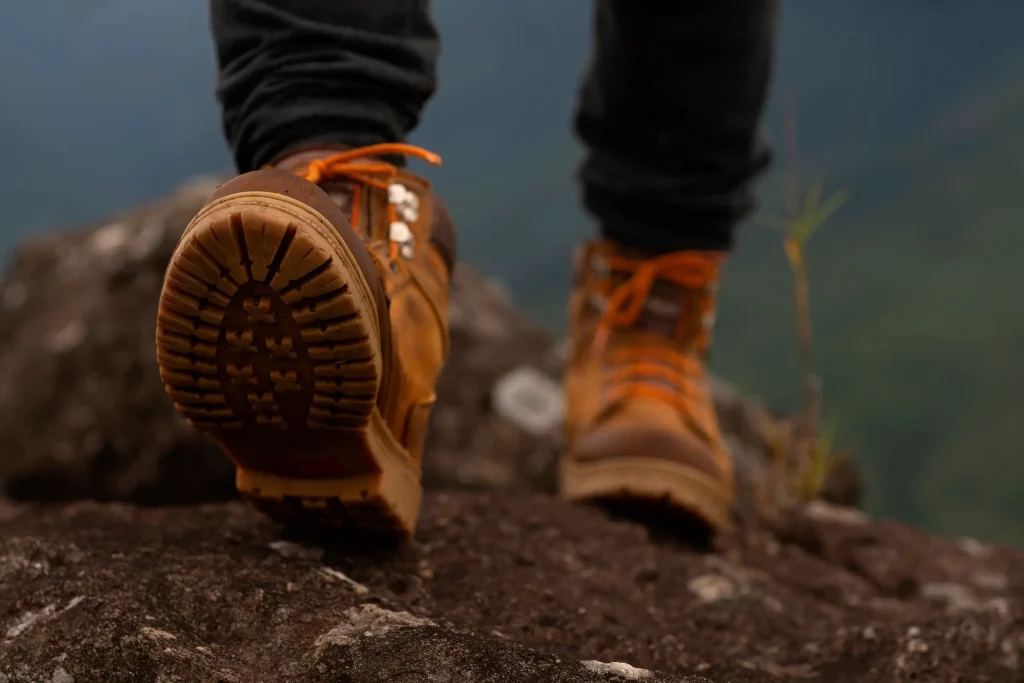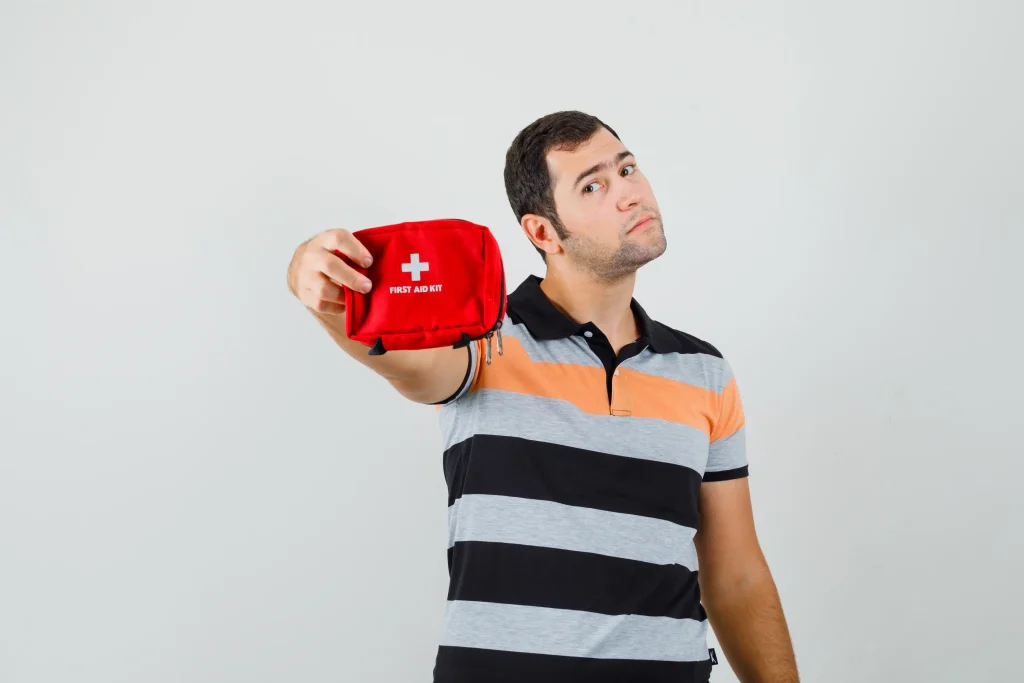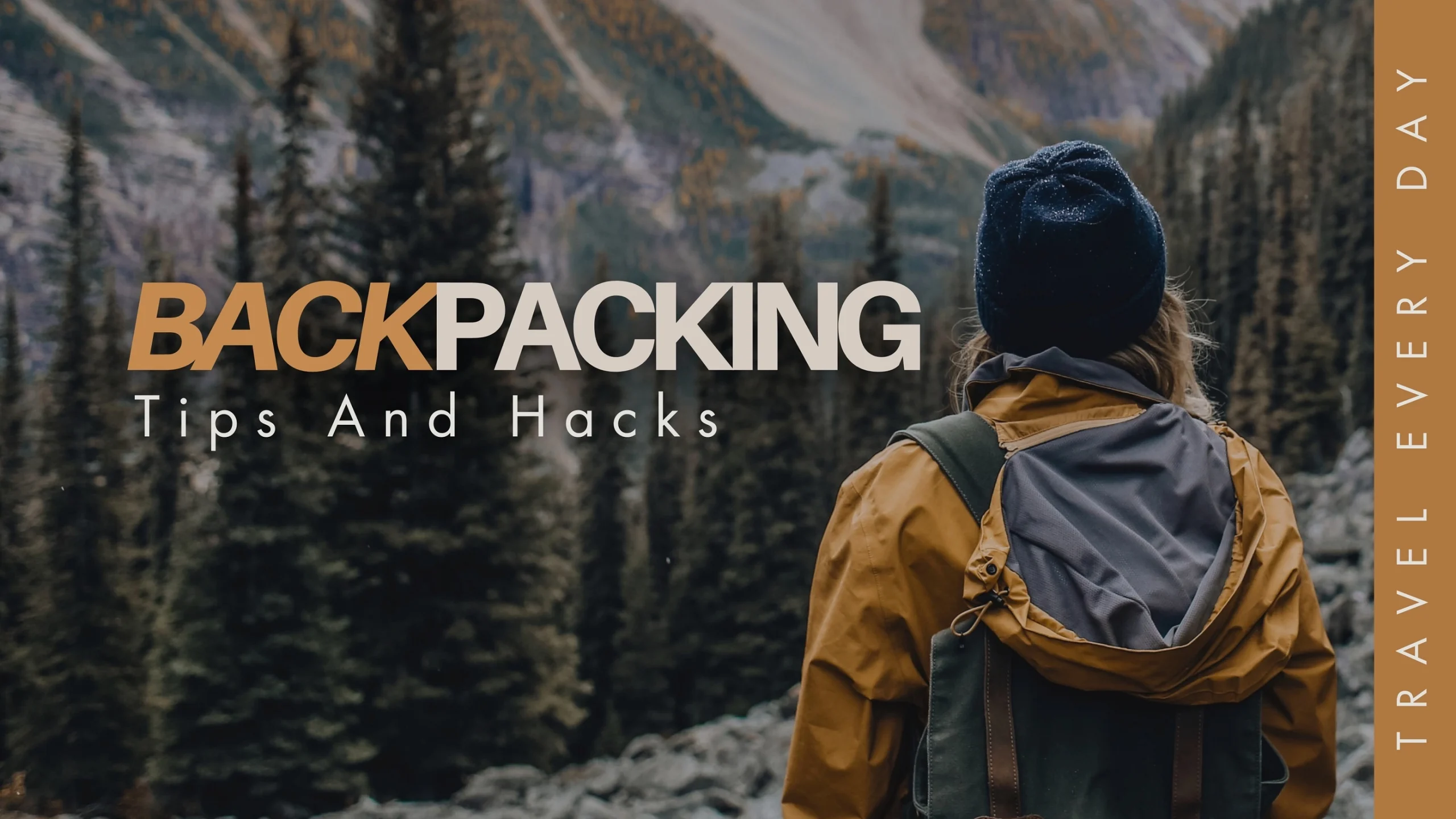Discover 15 essential beginner backpacking tips—from choosing the right pack to avoiding blisters and smart hacks—for a smoother first adventure.
Hey friends, backpacking tips and hacks for beginners can turn what seems like a daunting adventure into something truly exhilarating. I’ve been hitting the trails for over a decade now, from solo treks in the Rockies to group jaunts through European forests. Remember my first trip? I overpacked like crazy and ended up with blisters that could tell their own stories. Let’s chat about how to avoid those rookie mistakes. I’ll share what I’ve learned the hard way, pulling from my experiences and insights from fellow wanderers.
Choosing the Right Backpack
Picking your backpack is like finding the perfect travel buddy. It has to fit just right or it’ll drag you down. On my early hikes, I grabbed a cheap one that rubbed my shoulders raw after a few miles. Now, I always measure my torso length first. Aim for 40-60 liters if you’re starting with weekend trips.
Size matters based on your adventure length. For a quick overnight, 30-50 liters works fine. Longer hauls? Go up to 70. I once squeezed into a 50-liter for a five-day stint and regretted not having extra space for snacks. Test the weight distribution in the store.

Look for padded straps and a sturdy hip belt. These shift the load to your hips, saving your back. I swear by ventilated backs to cut down on sweat. Add compartments for quick access to maps or water. A rain cover built-in has saved my gear during sudden downpours more times than I can count.
Fit is king. Adjust the straps while loaded with weight. Walk around the shop like you’re on the trail. I’ve returned packs that felt great empty but pinched when full. Comfort turns a tough hike into pure joy.
Packing Essentials
Packing smart keeps your load manageable. I start with versatile clothing layers. Base with moisture-wicking tees, mid with fleeces, outer with waterproof shells. Cotton? Skip it—it holds sweat and chills you fast. I’ve frozen on mild nights because of that mistake.
Footwear basics include extra socks. Wool blends dry quick and cushion feet. Undergarments? Pack one per day plus spares. A hat shields from sun or cold. Gloves for chilly mornings. I always toss in a lightweight scarf—it doubles as a neck warmer or towel.
For food, focus on high-energy, lightweight options. Nuts, jerky, energy bars fuel without bulk. Dehydrated meals rehydrate easy with hot water. I learned to pack an extra day’s worth after a storm delayed me once. Portion everything in zip bags to save space.
Water gear is non-negotiable. A collapsible bottle or bladder holds plenty. Purification tablets or a filter ensure safe sips from streams. I’ve guzzled questionable water and paid for it with a rough night. Plan your refills based on trail maps.
Lightening Your Load
Every ounce counts when you’re carrying it all day. I weigh my gear on a kitchen scale now. Ditch duplicates like extra knives. Multi-use items shine here—a bandana wipes sweat, filters water, or slings an arm. I’ve used mine as a pot holder in a pinch.
Choose lightweight fabrics. Synthetic shirts pack small and dry overnight. Down sleeping bags compress tiny but insulate well. I switched from bulky synthetics and shaved pounds off my pack. Test gear at home to see what you really need.
Share the load if hiking with pals. One tent for two, split cooking tools. On group trips, we’ve divided spices and first-aid supplies. It builds camaraderie too. Just coordinate ahead to avoid gaps.
Repackage food to cut waste. Ditch heavy boxes for bags. Measure portions precisely. I’ve overpacked snacks and lugged uneaten bars home. Lightening up lets you move faster and enjoy the scenery more.
Footwear Tips
Boots can make or break your trip. I blistered badly on my first outing with ill-fitting ones. Choose based on terrain—low-cut for flat paths, mid for rocky. Waterproof membranes keep feet dry in streams. Good tread grips slippery roots.
Break them in gradually. Wear around town for weeks. Short hikes build calluses without pain. I lace mine snug at the heel but loose at toes for wiggle room. Thick socks prevent hot spots.

Care for them post-trip. Clean mud off, air dry away from heat. Stuff with newspaper to hold shape. I’ve extended boot life this way for years. Invest in quality—cheap ones fall apart fast.
Alternate shoes if possible. Camp sandals let feet breathe at night. I’ve soothed sore soles by switching after miles. Comfortable feet mean you hike longer without complaints.
Setting Up Camp
Site selection sets the tone for rest. I scout flat, dry spots away from water to dodge floods and bugs. Trees block wind but avoid dead branches overhead. Follow park rules for distance from trails.
Clear debris before pitching. Rocks jab through tents. A groundsheet adds protection and insulation. I stake corners first for stability. Pull taut to shed rain.
Practice setup at home. Timed drills make it second nature. I’ve fumbled in the dark and learned the hard way. Secure guylines for storms. A well-pitched tent feels like home after a long day.
Organize inside right away. Sleeping pad inflated, bag unrolled. Keeps things tidy. I’ve tripped over gear in cramped spaces. Good camp setup means better sleep and energy for tomorrow.

Staying Safe
Safety starts with navigation. I carry a compass and paper map always. GPS apps fail without signal. Practice orienteering basics—I’ve wandered off-trail and used landmarks to regroup.
Build an emergency kit. Bandages, tweezers, pain relievers cover basics. A whistle signals help. Fire starters and a blanket prepare for overnights gone wrong. Check expiration dates yearly.
Tell someone your plans. Share itinerary and return time. I’ve hiked solo but always leave details with a friend. Check-ins via satellite device add peace if remote.
Weather awareness saves trouble. Monitor forecasts. Layer for changes. I’ve been caught in hail and huddled under a tarp. Preparation turns risks into stories.
Leave No Trace
Pack out everything. Trash, scraps, even fruit peels. I use a dedicated bag for waste. Burying it attracts animals. Clean sites preserve beauty for others.
Human waste needs handling. Dig a six-inch cathole far from water. Pack toilet paper out. I’ve seen polluted streams from lazy campers. Respect keeps trails open.
Wildlife viewing from afar. No feeding—it harms habits. Secure food in bear bags or canisters. I’ve hung mine high and slept soundly. Sticking to paths minimizes erosion.
Campfires only where allowed. Use existing rings. Drown embers fully. I’ve skipped fires for safety and enjoyed stars instead. Small actions protect the wild.
Staying Comfortable
Layering beats bulk. Base wicks sweat, mid insulates, outer blocks elements. I adjust on the fly—peel off when climbing, add when resting. Merino wool breathes and fights odor.
Sleeping setup matters. A pad with high insulation value cushions and warms. I inflate mine fully for support. Pillow? Stuff clothes in a sack. Cozy nights recharge you.
Hygiene hacks help. Wet wipes freshen up. Change into dry clothes for bed. I’ve avoided chills by keeping sleep gear clean. Comfort turns fatigue into fun.
Pace yourself. Short breaks prevent burnout. I snack often for energy. Listen to your body—rest when needed. Enjoyable trips build lasting love for backpacking.

Food Preparation
Plan meals for ease. Breakfast? Oatmeal packets heat quick. Lunch: wraps with nut butter. Dinner: dehydrated pouches. I’ve experimented and found favorites that pack light.
Cook with minimal tools. A small stove boils water fast. Share pots to save weight. I clean with sand if water’s scarce. Simple setups mean more time relaxing.
Variety fights boredom. Mix proteins, carbs, fats. Spices in tiny bottles add flavor. I’ve perked up bland rice with herbs. Good food boosts morale on tough days.
Store securely. Hang bags at night. Rodents raid unsecured stashes. I’ve lost snacks to squirrels and vowed better habits. Proper prep ensures you eat well.
Hydration Strategies
Water intake is crucial. I aim for two liters daily, more in heat. Dehydration sneaks up—headaches, fatigue. Sip steadily rather than gulp.
Sources vary by trail. Streams need treatment. I filter every time. Tablets work in a pinch. Plan routes with reliable spots. I’ve carried extra when uncertain.
Bladders vs. bottles? Bladders sip hands-free. Bottles clean easier. I use both. Electrolyte packs replenish salts. They saved me on sweaty climbs.
Monitor urine color. Pale means hydrated. Dark? Drink up. I’ve adjusted mid-hike and felt the difference. Staying quenched keeps you strong.
Budgeting for Backpacking
Costs add up quick. I budget for gear first—rent if testing. Thrift stores yield deals on basics. Invest in durable items like packs.
Transport eats funds. Carpool or public transit cuts it. I’ve hitched rides with hikers for free. Plan ahead for permits—some book fast.
Food hacks save. Bulk buy trail mix. Dehydrate your own fruits. I’ve made jerky at home cheaper than store-bought. Smart spending stretches adventures.
Group trips split expenses. Shared tents, fuel. I’ve saved hundreds teaming up. Budgeting lets you focus on fun, not finances.
Training Before Your Trip
Build stamina gradually. I started with weighted day hikes. Add miles weekly. Simulate trails—hills, uneven ground. Strength grows over time.
Core exercises help. Planks stabilize for packs. Leg workouts like squats power climbs. I’ve trained and tackled steeper paths easier.
Rest days prevent injury. Stretch post-hike. Listen for pains. I’ve pushed too hard and sat out trips. Balanced prep pays off.
Mental prep counts. Visualize challenges. Positive mindset turns obstacles fun. I’ve meditated on trails and stayed calm in storms.
Dealing with Wildlife
Observe, don’t approach. Binoculars let you watch safely. I’ve spotted bears from afar and marveled. Distance keeps everyone safe.
Food storage key. Canisters in bear country. Hang high elsewhere. I’ve used odor-proof bags too. Prevents unwanted visitors.
Noises deter surprises. Talk or clap on blind curves. I’ve avoided startling deer this way. Awareness avoids conflicts.
Learn local fauna. Know snakes, insects. Repellent and nets help. I’ve researched and packed accordingly, enjoying worry-free hikes.
Health and Hygiene on the Trail
Hygiene prevents issues. Baby wipes clean without water. I pack a small trowel for waste. Biodegradable soap for rare washes.
Anti-chafe balm is gold. Apply to thighs, underarms. I’ve chafed badly and now never forget it. Keeps discomfort at bay.
Medications matter. Allergies? Carry epi-pen. Pain relievers for aches. I’ve stocked up and handled headaches swiftly.
Sun protection essential. Hat, sunscreen, long sleeves. I’ve burned and learned to reapply often. Health hacks ensure smooth travels.

Navigation Beyond Basics
Apps like Gaia GPS guide offline. I download maps pre-trip. Mark waypoints for camps. Saved me when fog rolled in.
Compass skills build confidence. Pair with topo maps. I’ve practiced bearings and navigated fog successfully. Tech backups are wise.
Group navigation shares load. Discuss routes daily. I’ve corrected course with team input. Collective eyes spot errors.
Emergency beacons add security. InReach texts without cell. I’ve used for check-ins on remote solos. Peace for you and home.
Hey friends, diving deeper into backpacking tips and hacks for beginners, let’s talk gear maintenance. Clean after each trip. Brush dirt, air dry. I’ve extended tent life by storing loosely. Prevents mildew.
Repairs on trail? Duct tape patches rips. I’ve fixed poles mid-hike. Kit with needle, thread covers basics. Preparedness fixes small issues fast.
Upgrade wisely. Start basic, add as needed. I’ve swapped heavy items for light over years. Evolves with experience.
Community helps. Join forums, ask vets. I’ve gained hacks from Reddit threads. Shared knowledge elevates everyone.
Frequently Asked Questions
What should beginners pack for their first backpacking trip?
Focus on essentials like a fitted backpack, layered clothing, and a sleeping system. Include navigation tools, water purification, and high-energy food. Don’t forget a first-aid kit and emergency blanket. Test everything at home first.
How do I choose the right trail for a beginner backpacking adventure?
Start with easy to moderate routes, 5-10 miles roundtrip. Check for water sources and minimal elevation. Use apps like AllTrails for reviews. Go in good weather seasons.
What’s the best way to stay safe while backpacking alone?
Share your itinerary with someone. Carry a satellite communicator. Stick to marked trails. Know basic first aid and wildlife protocols.
How can I reduce my pack weight without sacrificing comfort?
Opt for multi-use gear like a spork or bandana. Repackage food in lighter bags. Share items in groups. Weigh everything and cut non-essentials.
What food options work best for beginner backpackers?
Go for no-cook if new—bars, nuts, wraps. Add dehydrated meals for hot eats. Plan calories per day. Include electrolytes for hydration.
Conclusion
Wrapping up, friends, backpacking opens worlds of wonder if you prep right. From my blistered beginnings to effortless multi-day treks, these lessons shaped my journeys. Embrace the tips, adapt to your style, and hit the trail. Nature awaits—stay safe, leave traces minimal, and create memories that’ll last. Who’s ready for their first adventure? Let’s chat more over coffee sometime.



